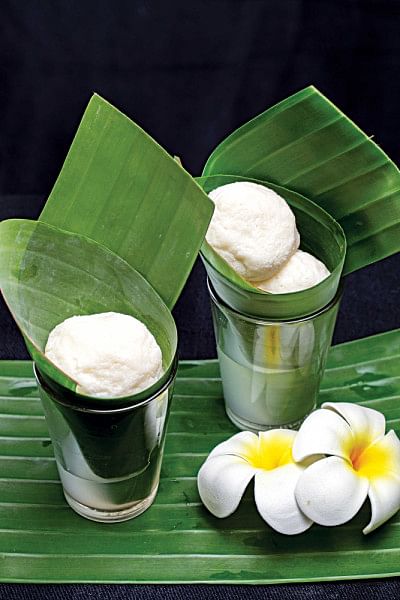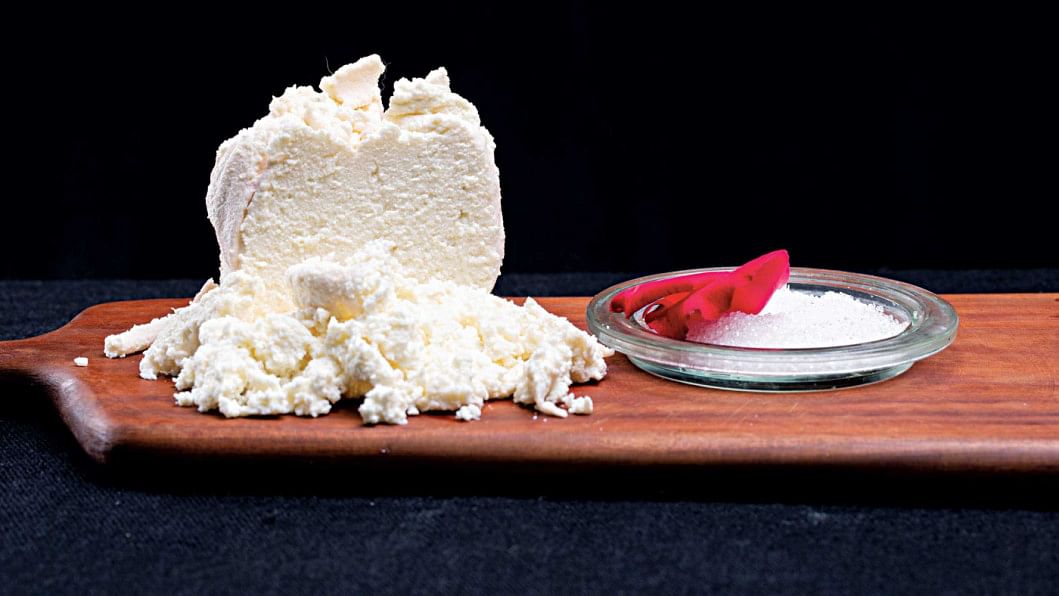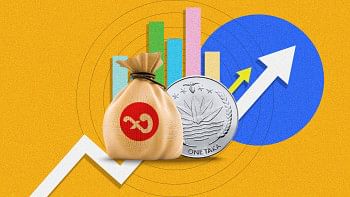Roshogolla — wrapped in rich history and taste

The clouds of autumn, like its kaashful are iconic, soft, white, and endearingly squishy to the naked eye. Would it then be strange to want to put them on a plate and eat them? The closest we can get to eating the Shorot cloud is the equally soft, white, and squishy roshogolla. Perhaps that is why it remains among Bengal's favourite desserts, and is always a crowd pleaser right after coconut narus during Shorot's main festival the annual Durga Puja.
The delectable and unique sweets of Bangladesh are indeed a culinary representation of our country. After all, the array of various mishtis from different parts of the country speak volumes about its diversity — chomchom from Tangail, roshmalai from Cumilla, monda from Mymensingh, doi from Bogura, and pera from Naogaon are all regional delicacies that we may take pride in.
However, one might argue that the legendary roshogolla triumphs all! Sweet, syrupy, soft cheese balls that is a game changer of a dessert — or that is how famous British Chef William Harold described it in a journal. In Bangladesh, roshogolla of Jessore is widely popular across the country.
The soft spongy balls of deliciousness drenched in a sugary syrup is not only rich in terms of taste, but also history. While the item is sweet, it gave rise to a bitter debate between two states in India being West Bengal and Odisha in order to win the tag of its Geographical Indication (GI).
After a tug of war that lasted for about two and a half years, finally the state of West Bengal had been rewarded the Geographical Indication for Bengal roshogolla. However, given the fact that this sweet delicacy is an indispensable part of our cuisine, many Bangladeshis may argue that roshogolla is an invention of our country!
Amidst the raging dispute, the movie entitled Roshogolla had hit the screens on December 2018, giving the audience a fresh look back at the history of this sweet treat. The movie circulating around the creation of roshogolla also emphasises on the amount of time, effort, and money that went behind its making.
It accentuated the struggles and hardships that a sedulous sweet maker, Nobin Chandra Das had to go through to invent the roshogolla as we know it today. Not to mention the continuous method of trial and error, which is the practice behind many great inventions of food. This eventually created a legacy, given that not many food items have a biopic of their own!
Legend has it that Nobin Chandra Das, also known as the "Columbus of Roshogolla" successfully prepared this dessert first in 1868, and taught others how to create it rather than applying for a patent. His descendants carried down the original recipe and further popularised it along with successfully commercialising it in canned avatars.
Amazingly, the victory of West Bengal in earning the GI tag led to the inauguration of Roshogolla Day in Kolkata (which ironically happens to be World Diabetes Day as well), complete with a Roshogolla Festival. Here, one can find the sweet treat in all colours of the rainbow, in flavours unimagined, including strawberry, pineapple, mint, chocolate, coffee, and even red chilli!

Over time, like most other things, roshogolla has also evolved, the other highly popular variant being the brownish tinged sweet balls from the state of Odisha. But now, contemporary chefs are trying their hand at modernising this dessert, and Kishwar's attempt at making a croissant stuffed with roshogolla in an episode of MasterChef Australia Session 13 is just one example.
Despite the dispute over its geographical indication, we can all agree that every household has their version of preparing roshogolla. The vast availability of sweetshops has made it a less common practice to prepare sweets at home, but otherwise the recipe is simple to follow.
The original version involves curdling milk and separating chhana from it before forming them into balls mixed with a combining agent, followed by cooking them in hot sugar syrup. Nowadays, renditions made with semolina or milk powder have also surfaced. Although these newer versions do not contain the authentic taste, they have a unique flavour profile of their own.
Whether homemade or not, roshogolla has become customary as a dessert without which any occasion or festival seems to be incomplete. Be it the holy occasion of Eid or the auspicious festivities of Puja, roshogolla is omnipresent in any celebration of the Bengali diaspora. Like every other food, it is a way to connect people, beyond boundaries and cultures.
Photo: Sazzad Ibne Sayed
Food Styling: RBR

 For all latest news, follow The Daily Star's Google News channel.
For all latest news, follow The Daily Star's Google News channel. 



Comments